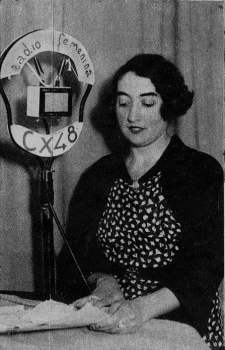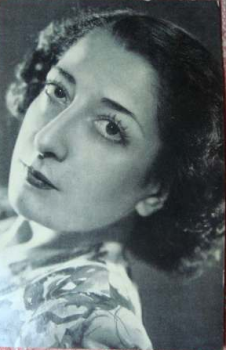A Sound History of Gender and Radio in South America Christine Ehrick / University of Louisville


Starting in the late 1960s, Murray Shafer laid the foundations for what would become the interdisciplinary field of Sound Studies with his concept of the soundscape, which he coined as a way to describe the “acoustic environment” of contemporary societies.2 Sound Studies has subsequently opened up an entirely new paradigm for understanding the role of the sonic in the forging of modernity. Jonathan Sterne has called on scholars to “think sonically” and to use sound to “ask big questions about their cultural moments and the crises and problems of their time.”3 Scholars are increasingly using sound as a category of historical analysis, exploring how sound of term paper and the perception of sound have varied over time and place, as well as how one might “hear” social, cultural, and political change over time.4 Yet relatively little consideration has been given to the ways that sound might reflect and construct gender (and vice versa). Building upon groundbreaking historical work on women and radio by scholars like Michele Hilmes and Kate Lacey, I employ the concept of the gendered soundscape to advance a dialogue between sound history and gender history.5 Helmi Järviluoma et al introduce the term, asking readers to contemplate the way gender – and gendered hierarchies – may be projected and/or heard in sound environments. We not only “learn gender through the total sensorium,” as they put it; gender is also represented, contested, and produced through the aural.6 Thinking historically about gendered soundscapes can help us conceptualize sound as a space where categories of “male” and “female” are constituted, and by extension the ways that power, inequality and agency might be expressed in the sonic realm.
One of the most immediately gendered sound categories is the human voice, a richly historical convergence of biology, technology and culture. Voice differences have roots in biological sex difference, but gendered constructions of the human voice vary widely over time and place. While by no means absent in the traditional gendered soundscape, women’s voices have been muted and private, and the near absence of female voices in the public realm is one of the primary ways in which the gendered soundscape has manifested and reproduced itself over the centuries. The advent of radio opened a new chapter in this ancient struggle of women to speak and be heard. Depending on content and context, these voices carried the potential to not only challenge taboos on women’s oratory, but to assert the female bodies into spaces and spheres from which they previously had been excluded.7 By tuning into the gendered soundscape we come to understand radio as a key arena for the reinforcement and contestation of gender, as well as the often contradictory ways that the perceived dissonance of the female radio voice was employed to compel (and sometimes incite) listening audiences.

Image Credits:
1. Radio and Gendered Soundspace
2. Women in Radio in South America; Image from Uruguayan magazine Mundo Uruguayo, 19 December 1935. Courtesy of the author.
3. Silvia Guerrico
- “Sintonizando.” Sintonía No. 57, 26 May 1934. [↩]
- R. Murray Schafer, The Soundscape: Our Sonic Environment and the Tuning of the World. Rochester, VT: Destiny Books, 1993, 7. [↩]
- Jonathan Sterne ed., The Sound Studies Reader. London: Routledge, 2012, 3. [↩]
- Some recent and forthcoming sound studies-inspired historical studies include: Aimee Boutin, City of Noise: Sound and Nineteenth-Century Paris. Urbana: University of Illinois Press, forthcoming 2015; Edwin C. Hill, Black Soundscapes White Stages: The Meaning of Francophone Sound in the Black Atlantic. Baltimore, MD: Johns Hopkins University Press, 2013; Ana María Ochoa Gautier, Aurality: Listening and Knowledge in Nineteenth-Century Colombia. Durham, NC: Duke University Press, 2014; and Isaac Weiner, Religion Out Loud: Religious Sound, Public Space, and American Pluralism. New York: New York University Press, 2013. [↩]
- Michele Hilmes, Radio Voices: American Broadcasting, 1922-1952. Minneapolis: University of Minnesota Press, 1997; Kate Lacey, Feminine Frequencies: Gender, German Radio and the Public Sphere, 1923-1945. Ann Arbor: University of Michigan Press, 1996. [↩]
- Helmi Järviluoma, Pirkko Moisala and Anni Vilkko. Gender and Qualitative Methods. London: Sage, 2003, 85. [↩]
- See Nirmal Puwar, Space Invaders: Race, Gender and Bodies out of Place. London: Berg, 2004. [↩]
Pingback: A Sound History of Gender and Radio in South America – Christine Ehrick – Maya Holmes-Hartley